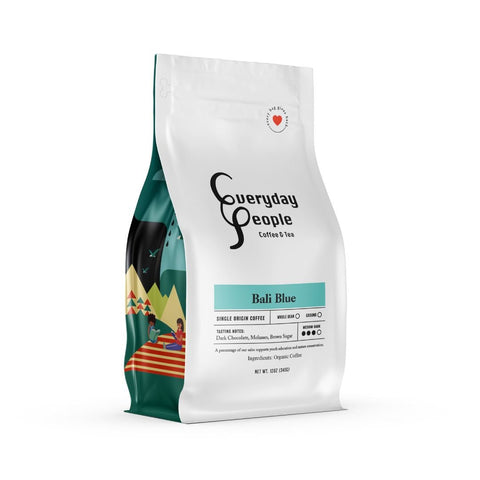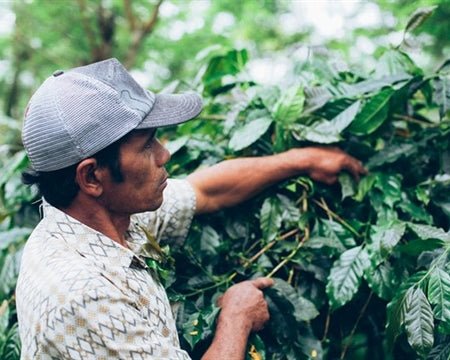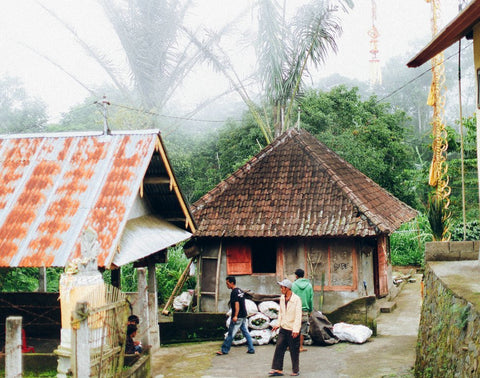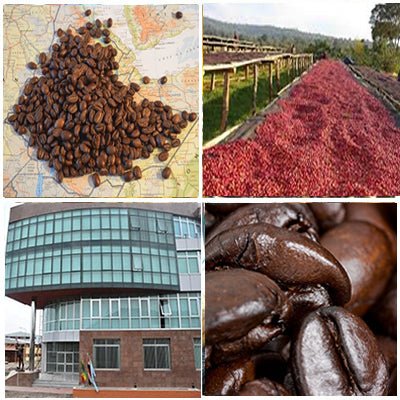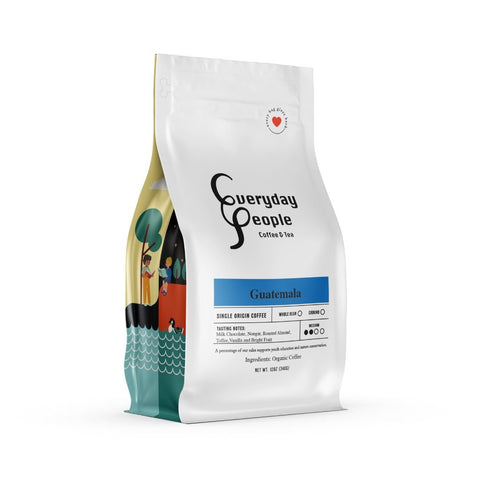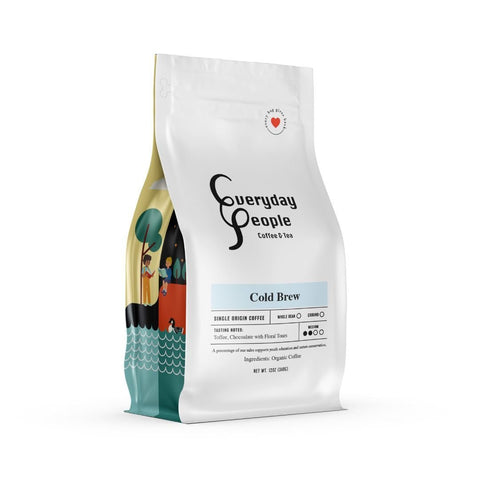
The best espresso machine in the world can't save bad beans. Whether you've invested in a prosumer espresso machine under $1000 or you're pulling shots on an entry-level setup, your bean selection determines 70% of your espresso quality. The difference between a mediocre shot and café-quality espresso starts long before you touch the portafilter it starts with choosing the right coffee beans.
If you've ever wondered what makes certain beans better for espresso or why some coffees produce thick, luxurious crema while others fall flat, you're in the right place. This comprehensive guide cuts through the marketing hype to reveal what actually matters when selecting espresso beans, from roast levels and origins to freshness and processing methods.
What Makes Coffee Beans Good for Espresso?
The Science of Espresso Extraction
Espresso brewing fundamentally differs from other coffee methods. The high-pressure extraction (typically 9 bars) forces hot water through finely ground coffee in 25-30 seconds, creating an intensely concentrated beverage with complex layers of flavor. This aggressive extraction method amplifies both the best and worst characteristics of your beans.
Unlike pour-over or French press, which allow more room for error, espresso is unforgiving. Stale beans, improper roast levels, or unsuitable origins become immediately apparent in your cup. The concentrated nature of espresso means every flaw gets magnified—and so does every positive attribute.
Key Characteristics of Great Espresso Beans
1. Roast Level Matters
Medium to dark roasts typically perform best for espresso. The extended roasting time develops soluble compounds that extract well under pressure and create the oils necessary for rich crema. Light roasts can work for espresso but require more precise dialing in and better equipment.
2. Oil Content and Crema Production
Surface oils on darker roasted beans contribute to crema formation—that golden-brown foam that tops a well-pulled espresso shot. While crema isn't everything, it's an indicator of proper extraction and fresh beans. Too much oil can clog grinders in super-automatic machines, while beans without any surface oils may lack body.
3. Bean Density and Freshness
Dense, high-altitude beans often produce more complex espresso with better acidity and sweetness. However, freshness trumps everything. Coffee begins losing aromatic compounds within 15 minutes of grinding, and even whole beans start degrading 2-4 weeks after roasting. For espresso, this timeline is even more critical.
4. Origin Characteristics That Shine Under Pressure
Some origins naturally complement espresso's intensity. Brazilian beans offer chocolate and nut notes with low acidity. Ethiopian coffees provide floral, fruity complexity. Indonesian beans deliver earthy, full-bodied richness. The best espresso beans balance sweetness, acidity, and body in ways that survive high-pressure extraction.
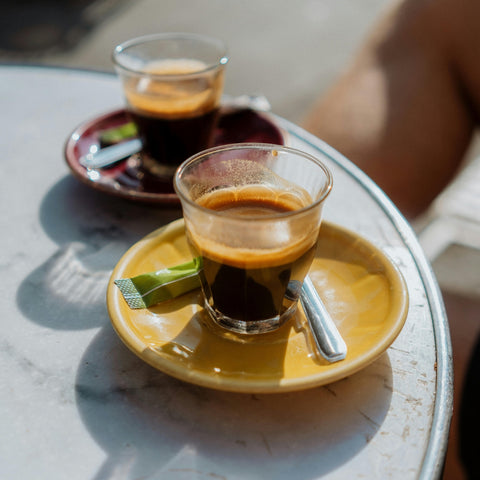
Espresso Beans vs Regular Coffee Beans: What's the Difference?
The Truth About "Espresso Roast"
Here's what the coffee industry doesn't always advertise: any coffee can technically be used for espresso. There's no special "espresso bean" species. The term "espresso roast" is primarily a marketing label that indicates a darker roast profile optimized for high-pressure brewing.
That said, beans marketed as "espresso" typically share certain characteristics:
- Darker roast profiles (Full City to French/Italian roast)
- Optimized for pressure extraction with developed soluble compounds
- Designed for crema production through longer roasting
- Balanced for milk drinks with enough body to stand up to steamed milk
Why Some Beans Work Better for Espresso
While you can pull espresso shots from any coffee, certain beans deliver better results. Medium-dark to dark roasts are more forgiving during extraction, producing consistent shots with less effort. Their developed sugars caramelize during roasting, creating sweetness that balances espresso's natural intensity.
Lighter roasts require more skill to extract properly. They demand precise temperature control, specific grind adjustments, and often more advanced equipment with features like PID temperature control and pre-infusion. For beginners, starting with traditional espresso roasts provides a better learning foundation.
Best Roast Levels for Espresso
Medium Roast (City to Full City)
Flavor Profile: Bright acidity, pronounced origin characteristics, tea-like clarity
Best For: Single-origin espresso, experienced baristas, filter-style espresso
Crema: Lighter, more delicate foam layer
Extraction Notes: Requires precision and often advanced equipment
Medium roasts showcase the coffee's origin more clearly. African coffees like our African Sunrise Espresso reveal bright acidity with notes of citrus and floral undertones that create a lively espresso experience. These roasts work beautifully in milk-based drinks like cortados where you want the coffee flavor to remain prominent.
Guatemala and Colombian medium roasts provide balanced sweetness with chocolate notes without the heavy body of darker roasts. They're excellent for home baristas looking to explore beyond traditional espresso flavors.
Medium-Dark Roast (Full City+/Vienna) ⭐ RECOMMENDED FOR MOST HOME BARISTAS
Flavor Profile: Balanced sweetness, rich body, chocolatey notes
Best For: Versatile use—excellent both black and with milk
Crema: Rich, substantial, persistent
Extraction Notes: Most forgiving roast level
This is the sweet spot for most home espresso enthusiasts. Medium-dark roasts like Bali Blue or Honduras single origins deliver rich chocolate and caramel flavors while maintaining enough acidity to keep shots interesting. The Bali Blue from Kintamani Highlands delivers complex flavors with remarkable depth, featuring rich dark chocolate, molasses sweetness, and brown sugar finish.
These roasts excel in lattes and cappuccinos, providing enough body to cut through milk while avoiding the burnt notes of very dark roasts. They're also more forgiving if your grind or technique isn't perfect—making them ideal for developing your espresso skills.
Dark Roast (French/Italian)
Flavor Profile: Bold, chocolatey, smoky, very low acidity
Best For: Traditional Italian-style espresso, milk-heavy drinks
Crema: Thick, long-lasting, dark amber
Extraction Notes: Very forgiving, consistent results
Six Bean Espresso Custom Blend represents this category well—a dark roast specifically designed for espresso with enhanced caffeine content and robust flavor that stands up to any amount of milk. Dark roasts minimize origin characteristics in favor of roast-developed flavors: dark chocolate, toasted nuts, caramelized sugar, and pleasant bitterness.
Many traditional cafés rely on dark roasts because they deliver consistent flavor regardless of seasonal origin variations. Classic Italian blends like Lavazza Super Crema combine Arabica and Robusta beans for full body, excellent crema, and balanced sweetness with hints of hazelnut and brown sugar.
Light Roast for Espresso?
The Third-Wave Espresso Movement
Specialty coffee shops increasingly serve light-roast espresso to highlight unique origin characteristics and fruit-forward flavors. Ethiopia Natural single origins shine as light-roast espresso, delivering wine-like acidity and berry notes.
Challenges with Light Roasts:
- Requires precise temperature control and advanced equipment
- Demands expert-level dialing-in skills
- Often needs pressure profiling capabilities
- Can produce sour shots if under-extracted
- Less forgiving of technique errors
Recommendation: Light roasts are not ideal for beginners. Master espresso fundamentals with medium-dark roasts first, then experiment with lighter roasts once you've developed your technique.

Espresso Beans vs Regular Coffee Beans: What's the Difference?
The Truth About "Espresso Roast"
Here's what the coffee industry doesn't always advertise: any coffee can technically be used for espresso. There's no special "espresso bean" species. The term "espresso roast" is primarily a marketing label that indicates a darker roast profile optimized for high-pressure brewing.
That said, beans marketed as "espresso" typically share certain characteristics:
- Darker roast profiles (Full City to French/Italian roast)
- Optimized for pressure extraction with developed soluble compounds
- Designed for crema production through longer roasting
- Balanced for milk drinks with enough body to stand up to steamed milk
Why Some Beans Work Better for Espresso
While you can pull espresso shots from any coffee, certain beans deliver better results. Medium-dark to dark roasts are more forgiving during extraction, producing consistent shots with less effort. Their developed sugars caramelize during roasting, creating sweetness that balances espresso's natural intensity.
Lighter roasts require more skill to extract properly. They demand precise temperature control, specific grind adjustments, and often more advanced equipment with features like PID temperature control and pre-infusion. For beginners, starting with traditional espresso roasts provides a better learning foundation.
Best Roast Levels for Espresso
Medium Roast (City to Full City)
Flavor Profile: Bright acidity, pronounced origin characteristics, tea-like clarity
Best For: Single-origin espresso, experienced baristas, filter-style espresso
Crema: Lighter, more delicate foam layer
Extraction Notes: Requires precision and often advanced equipment
Medium roasts showcase the coffee's origin more clearly. African coffees like our African Sunrise Espresso reveal bright acidity with notes of citrus and floral undertones that create a lively espresso experience. These roasts work beautifully in milk-based drinks like cortados where you want the coffee flavor to remain prominent.
Guatemala and Colombian medium roasts provide balanced sweetness with chocolate notes without the heavy body of darker roasts. They're excellent for home baristas looking to explore beyond traditional espresso flavors.
Medium-Dark Roast (Full City+/Vienna) ⭐ RECOMMENDED FOR MOST HOME BARISTAS
Flavor Profile: Balanced sweetness, rich body, chocolatey notes
Best For: Versatile use—excellent both black and with milk
Crema: Rich, substantial, persistent
Extraction Notes: Most forgiving roast level
This is the sweet spot for most home espresso enthusiasts. Medium-dark roasts like Bali Blue or Honduras single origins deliver rich chocolate and caramel flavors while maintaining enough acidity to keep shots interesting. The Bali Blue from Kintamani Highlands delivers complex flavors with remarkable depth, featuring rich dark chocolate, molasses sweetness, and brown sugar finish.
These roasts excel in lattes and cappuccinos, providing enough body to cut through milk while avoiding the burnt notes of very dark roasts. They're also more forgiving if your grind or technique isn't perfect—making them ideal for developing your espresso skills.
Dark Roast (French/Italian)
Flavor Profile: Bold, chocolatey, smoky, very low acidity
Best For: Traditional Italian-style espresso, milk-heavy drinks
Crema: Thick, long-lasting, dark amber
Extraction Notes: Very forgiving, consistent results
Six Bean Espresso Custom Blend represents this category well—a dark roast specifically designed for espresso with enhanced caffeine content and robust flavor that stands up to any amount of milk. Dark roasts minimize origin characteristics in favor of roast-developed flavors: dark chocolate, toasted nuts, caramelized sugar, and pleasant bitterness.
Many traditional cafés rely on dark roasts because they deliver consistent flavor regardless of seasonal origin variations. Classic Italian blends like Lavazza Super Crema combine Arabica and Robusta beans for full body, excellent crema, and balanced sweetness with hints of hazelnut and brown sugar.
Light Roast for Espresso?
The Third-Wave Espresso Movement
Specialty coffee shops increasingly serve light-roast espresso to highlight unique origin characteristics and fruit-forward flavors. Ethiopia Natural single origins shine as light-roast espresso, delivering wine-like acidity and berry notes.
Challenges with Light Roasts:
- Requires precise temperature control and advanced equipment
- Demands expert-level dialing-in skills
- Often needs pressure profiling capabilities
- Can produce sour shots if under-extracted
- Less forgiving of technique errors
Recommendation: Light roasts are not ideal for beginners. Master espresso fundamentals with medium-dark roasts first, then experiment with lighter roasts once you've developed your technique.
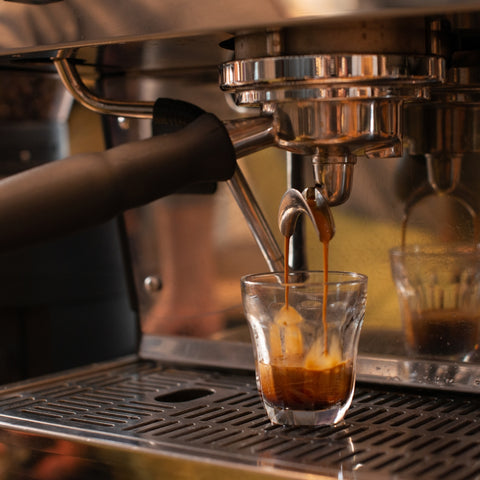
Single Origin vs Blends for Espresso
Espresso Blends: Consistency and Balance
Most commercial cafés serve espresso blends, and for good reason:
Advantages of Blends:
- Year-round consistency regardless of seasonal variations
- Balanced flavor profiles with controlled sweetness, acidity, and body
- Optimized for milk with enough strength to shine in lattes
- Cost-effective by combining expensive and affordable origins
- Forgiving extraction with more margin for error
Our African Sunrise Espresso expertly combines beans from Kenya, Tanzania, and Uganda to capture the vibrant essence of Africa's finest coffee-growing regions. This thoughtful blending creates a symphony of flavors more complex than any single component.
Blends also provide roasters flexibility to maintain consistent flavor profiles even as individual crop yields vary seasonally. For home baristas still developing their skills, blends offer a stable target that's easier to dial in consistently.
Single Origin Espresso: Terroir on Display
What Makes Single Origins Special:
- Unique terroir expression showcasing specific farms or regions
- Adventurous flavor profiles with distinctive characteristics
- Seasonal availability offering variety throughout the year
- Higher traceability connecting you to specific producers
- Educational value helping you understand different coffee regions
The Whiskey Barrel Aged Single Origin offers smooth caramel notes through an innovative aging process, while Honduras delivers bright, fruity espresso with chocolate undertones. Single origins tell a story—each cup reflects the specific microclimate, altitude, processing method, and varietal characteristics of its origin.
The Trade-offs:
Single origins can be more challenging to dial in because their flavor profiles vary more dramatically between harvests. They're also typically more expensive due to smaller production volumes and specialty-grade quality requirements. Some single origins work better as straight espresso shots rather than in milk drinks where their subtle characteristics might get lost.
Which Should You Choose?
Choose Blends If You:
- Primarily drink milk-based espresso drinks (lattes, cappuccinos)
- Want consistent results shot after shot
- Are still developing your espresso technique
- Prefer balanced, approachable flavors
- Want better value for everyday drinking
Choose Single Origins If You:
- Enjoy straight espresso shots or cortados
- Have experience dialing in espresso
- Want to explore diverse flavor profiles
- Appreciate coffee as a craft beverage
- Don't mind seasonal availability and price variations
The Best Approach: Keep both options in your rotation. Use a reliable blend for daily milk drinks and special single origins for weekend espresso tasting sessions.
Top Coffee Origins for Espresso
Brazil: The Espresso Foundation
Flavor Profile: Chocolate, nuts, caramel, low acidity, heavy body
Why It Works: Sweet, balanced, and incredibly forgiving
Best Uses: Espresso blends, straight shots, milk drinks
Processing: Typically natural or pulped natural
Brazil produces nearly 40% of the world's coffee, and there's a reason Brazilian beans appear in most espresso blends. The country's low-altitude growing regions and natural processing methods create coffees with pronounced chocolate and nut characteristics that provide a solid foundation for balanced espresso.
Colombia: Balanced Versatility
Flavor Profile: Caramel, balanced acidity, medium body, apple notes
Why It Works: Clean, sweet, works alone or in blends
Best Uses: All-around espresso, versatile for any preparation
Processing: Washed, creating clarity and brightness
Colombian coffee represents espresso versatility. These medium-altitude beans offer enough acidity to keep shots interesting without overwhelming chocolate and caramel sweetness. Blends like Intelligentsia Black Cat Classic combine Colombian and Brazilian beans to achieve syrupy sweetness with chocolate and stone fruit notes.
Ethiopia: Floral Complexity
Flavor Profile: Floral, fruity, wine-like, bright acidity, tea-like body
Why It Works: Unique complexity, showcases specialty coffee
Best Uses: Straight shots for adventurous palates, cortados
Processing: Natural (fruity) or washed (floral)
Ethiopia Natural Single Origin demonstrates why this origin captivates specialty coffee enthusiasts. These high-altitude African beans produce espresso with blueberry, jasmine, and bergamot notes that taste nothing like traditional espresso—and that's exactly the point.
Guatemala: Rich and Satisfying
Flavor Profile: Chocolate, spice, cocoa, full body, balanced acidity
Why It Works: Rich without being heavy, complex without being challenging
Best Uses: Milk drinks, traditional espresso, all-day drinking
Processing: Washed, highlighting clean flavor development
Guatemala Single Origin - Medium Roast exemplifies why Guatemalan beans earn consistent praise from espresso enthusiasts. Grown at elevations of 1,200-1,800 meters, these beans develop concentrated flavors through slower maturation at high altitude.
Indonesia (Sumatra, Bali): Earthy Richness
Flavor Profile: Earthy, herbal, cedar, heavy body, low acidity
Why It Works: Unique profile, incredibly full-bodied
Best Uses: Bold espresso lovers, traditional preparations
Processing: Wet-hulled (giling basah), creating distinctive characteristics
Bali Blue from the Kintamani Highlands showcases Indonesian coffee's distinctive character through wet-hulling process unique to the region, creating earthy undertones with rich dark chocolate and molasses sweetness. This processing method creates the syrupy body and low acidity that Indonesian coffees are famous for.
Kenya: Bright and Wine-Like
Flavor Profile: Bright berry notes, wine-like acidity, medium body, complex
Why It Works: Distinctive character, incredibly clean
Best Uses: Single-origin shots, exploring specialty coffee
Processing: Washed, often double-fermented
Kenyan coffee represents the pinnacle of bright, complex espresso. These high-grown African beans produce shots with blackcurrant, grapefruit, and tomato notes that sound unusual but create beautifully balanced espresso with electric acidity.

Our Top Picks: Best Coffee Beans for Espresso
🏆 Best Overall: African Sunrise Espresso - Medium Dark
Origin: Kenya, Tanzania, Uganda blend
Roast Level: Medium-Dark
Flavor Profile: Bright citrus, floral undertones, balanced with smooth finish
Price: $21.99/12oz
Why It's Great for Espresso:
This expertly crafted blend combines the finest Arabica beans from renowned African coffee-growing regions, delivering a rich tapestry of flavors with bright acidity and citrus notes. The medium-dark roast strikes the perfect balance—dark enough for rich crema and forgiving extraction, light enough to preserve origin characteristics.
Best Brewing Parameters:
- Temperature: 200-203°F
- Ratio: 1:2 (18g in, 36g out)
- Time: 25-30 seconds
Who It's Best For: Intermediate to advanced home baristas who want espresso that works beautifully straight or with milk. The vibrant African characteristics shine in cortados and cappuccinos without getting lost.
Best for Milk Drinks: Bali Blue Single Origin - Medium Dark Roast
Origin: Kintamani Highlands, Bali
Roast Level: Medium-Dark
Flavor Profile: Rich dark chocolate, molasses, brown sugar finish
Price: $23.99/12oz
Why It's Great for Espresso:
Grown in volcanic highlands at elevations over 1,200 meters, this medium-dark roast delivers complex flavors with remarkable depth through the wet-hulling process unique to Indonesia. The full body and chocolate notes cut through milk perfectly while maintaining flavor integrity even in large lattes.
Best Brewing Parameters:
- Temperature: 198-201°F
- Ratio: 1:2 to 1:2.5 for milk drinks
- Time: 27-32 seconds (slightly longer for more body)
Who It's Best For: Latte and cappuccino lovers who want rich, chocolatey espresso that doesn't disappear under steamed milk. The earthy undertones and substantial body make this ideal for milk-forward drinks.
Link:
💪 Best Bold/Dark: Six Bean Espresso Custom Blend - Dark Roast
Origin: Custom six-bean blend
Roast Level: Dark
Flavor Profile: Bold, enhanced caffeine, robust espresso character
Price: $22.49/12oz
Why It's Great for Espresso:
This carefully developed house blend provides enhanced caffeine content through strategic bean selection while maintaining complex flavor profiles. The dark roast creates thick, persistent crema and traditional Italian espresso characteristics—bold enough to wake you up, smooth enough to enjoy.
Best Brewing Parameters:
- Temperature: 195-198°F (lower for dark roasts)
- Ratio: 1:2 to 1:2.5
- Time: 25-30 seconds
Who It's Best For: Traditional espresso lovers and those who want maximum caffeine kick. Perfect for morning double shots or Americanos where you want pronounced coffee strength.
🌟 Best Single Origin: Ethiopia Natural Single Origin - Medium Light Roast
Origin: Ethiopia
Roast Level: Medium-Light
Flavor Profile: Floral, bright fruity notes, wine-like complexity
Price: $22.79/12oz
Why It's Great for Espresso:
For adventurous espresso enthusiasts, this Ethiopian natural delivers an experience unlike traditional espresso. The bright, fruit-forward profile showcases what makes specialty single-origin espresso special. Expect blueberry, jasmine, and bergamot notes that create memorable straight shots.
Best Brewing Parameters:
- Temperature: 201-205°F (higher for lighter roasts)
- Ratio: 1:2.5 to 1:3 (longer ratio for clarity)
- Time: 25-28 seconds
Who It's Best For: Experienced baristas with quality equipment who enjoy exploring diverse flavor profiles. This is an "espresso enthusiast's espresso"—drink it straight to appreciate its complexity.
🎯 Best for Beginners: Guatemala Single Origin - Medium Roast
Origin: Guatemala
Roast Level: Medium
Flavor Profile: Chocolate, balanced, smooth, approachable
Price: $22.79/12oz
Why It's Great for Espresso:
Guatemala provides the perfect introduction to single-origin espresso. The balanced profile works for straight shots or milk drinks, and the medium roast forgives minor technique issues while you're learning to dial in. Expect pleasant chocolate notes without challenging acidity or overwhelming boldness.
Best Brewing Parameters:
- Temperature: 199-202°F
- Ratio: 1:2 (classic espresso ratio)
- Time: 27-30 seconds
Who It's Best For: New espresso enthusiasts building their skills, or anyone wanting a reliable daily drinker that consistently delivers quality shots without demanding perfect technique.
🌄 Best Value: Honduras Single Origin - Medium Dark Roast
Origin: Honduras
Roast Level: Medium-Dark
Flavor Profile: Bright, fruity espresso with chocolate undertones
Price: $22.79/12oz
Why It's Great for Espresso:
Honduras delivers bright, fruity espresso with chocolate undertones, offering exceptional value for specialty-grade coffee. This single origin provides complexity typically found in more expensive beans while maintaining the approachability of a well-executed blend.
Best Brewing Parameters:
- Temperature: 199-202°F
- Ratio: 1:2 to 1:2.5
- Time: 26-29 seconds
Who It's Best For: Budget-conscious espresso enthusiasts who refuse to compromise on quality. Excellent for daily drinking when you want something special without premium pricing.
🎁 Best Complex/Adventurous: Whiskey Barrel Aged Single Origin - Medium Roast
Origin: Whiskey barrel aged
Roast Level: Medium
Flavor Profile: Smooth caramel notes, unique barrel-aging characteristics
Price: $24.49/12oz
Why It's Great for Espresso:
The innovative whiskey barrel aging process creates smooth caramel notes and unique characteristics that set this coffee apart. The aging imparts subtle vanilla, oak, and caramel notes without overwhelming the coffee's natural characteristics—creating espresso that sparks conversation.
Best Brewing Parameters:
- Temperature: 200-203°F
- Ratio: 1:2
- Time: 26-29 seconds
Who It's Best For: Coffee enthusiasts looking for something different, whiskey lovers exploring coffee, or anyone wanting to impress guests with unique espresso. Makes exceptional after-dinner straight shots.

Recommended External Options
Intelligentsia Black Cat Classic Espresso ⭐ Third-Wave Classic
Why We Recommend It:
This Chicago-based roaster's flagship blend has been a specialty coffee favorite for years, combining honey-processed Brazilian and washed Colombian beans for syrupy sweetness with cherry, molasses, and chocolate notes. Intelligentsia pioneered Direct Trade relationships, ensuring farmers receive fair compensation while delivering exceptional quality.
Best For: Specialty coffee enthusiasts who want ethically-sourced beans with complex flavor profiles. Works beautifully as straight shots or in short milk drinks like cortados.
Price: ~$18/12oz
Available: Amazon, Intelligentsia website, specialty retailers
Lavazza Super Crema ⭐ Best Value Italian Blend
Why We Recommend It:
At $25.19 for 2.2 pounds, this Italian classic delivers exceptional value with medium roast profile featuring hazelnut and brown sugar notes that create excellent crema. The blend includes some Robusta beans (traditional in Italian espresso) for extra caffeine, body, and crema production.
Best For: Budget-conscious buyers wanting authentic Italian espresso, super-automatic machine owners (low oil content prevents grinder clogging), or anyone seeking reliable everyday espresso.
Price: ~$25/2.2 lbs (exceptional value)
Available: Amazon, supermarkets, online retailers
Counter Culture Big Trouble ⭐ Best Crowd-Pleaser
Why We Recommend It:
This medium-dark roast blend from sustainability pioneer Counter Culture combines South American and Papua New Guinea beans for caramel, chocolate, and smoky notes with full-bodied structure. Big Trouble lives up to its name as Counter Culture's most popular offering—loved by espresso purists and casual drinkers alike.
Best For: Versatile all-day espresso that works for any preparation method. Excellent for entertaining when you don't know everyone's preferences.
Price: ~$18/12oz
Available: Amazon, specialty retailers, Counter Culture website
Stumptown Hair Bender ⭐ Best Complex Blend
Why We Recommend It:
Named after the vacant hair salon that housed Stumptown's first Portland location, this signature blend balances lemon brightness with dark chocolate richness. The complex flavor profile makes it interesting enough for straight shots while maintaining the body needed for milk drinks.
Best For: Espresso enthusiasts who want complexity without sacrificing drinkability. Perfect for those graduating from mass-market coffee to specialty-grade beans.
Price: ~$16-19/12oz
Available: Amazon, Stumptown cafes, specialty retailers
Kicking Horse 454 Horse Power ⭐ Best Organic Dark Roast
Why We Recommend It:
This certified organic dark roast from Canadian roaster Kicking Horse delivers powerful, bold espresso without overwhelming bitterness, featuring smooth body with light, slightly acidic finish. The organic certification and Fair Trade sourcing appeal to environmentally-conscious consumers.
Best For: Organic coffee enthusiasts wanting bold, traditional espresso or those seeking maximum caffeine content with ethical sourcing.
Price: ~$15-18/10oz
Available: Amazon, natural food stores, online retailers
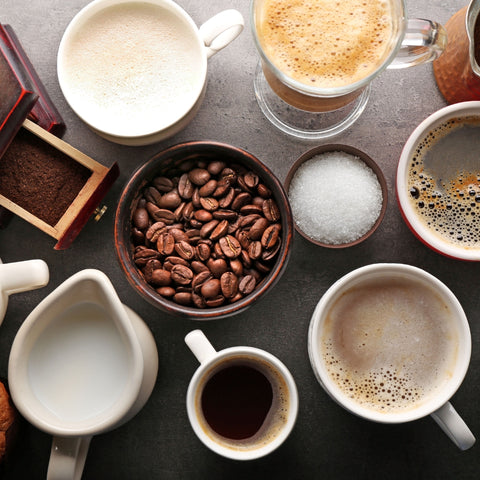
How to Choose Espresso Beans: Decision Framework
Consider Your Equipment
Entry-Level Machines ($200-500):
- Best Choice: Medium-dark to dark roasts
- Why: More forgiving of inconsistent pressure and temperature
- Recommended: Blends like African Sunrise Espresso or Lavazza Super Crema
- Avoid: Light roasts requiring precise control
Prosumer Machines ($500-1000+):
With features like PID temperature control, pre-infusion, and stable pressure, you can handle any roast level including challenging light roasts.
- Best Choice: Any roast level based on preference
- Experimentation: Try single origins and lighter roasts
- Recommended: Rotate between Ethiopia Natural and Bali Blue for variety
Super-Automatic Machines:
- Best Choice: Low-oil beans (medium roasts)
- Why: Prevent grinder clogging and maintenance issues
- Recommended: Lavazza Super Crema, Guatemala Single Origin
- Avoid: Very dark, oily beans
Consider Your Preferences
Straight Espresso Drinkers:
- Priority: Complex flavors, interesting acidity, balanced profiles
- Best Roasts: Medium to medium-dark
- Best Origins: Single origins from Ethiopia, Kenya, Guatemala
- Recommended: Ethiopia Natural, African Sunrise Espresso
Milk Drink Enthusiasts (Lattes, Cappuccinos):
- Priority: Body, chocolate notes, cuts through milk
- Best Roasts: Medium-dark to dark
- Best Origins: Indonesian, Brazilian, dark-roasted Colombian
- Recommended: Bali Blue, Six Bean Espresso
Flavor Adventurers:
- Priority: Unique characteristics, terroir expression
- Best Roasts: Varies by origin
- Best Origins: Single origins, experimental processing, specialty lots
- Recommended: Whiskey Barrel Aged, Ethiopian single origins, rotating seasonal offerings
Consider Your Skill Level
Beginners (0-6 months espresso experience):
- Start With: Medium-dark blends
- Characteristics: Forgiving, consistent, balanced
- Recommended: Guatemala Single Origin, Lavazza Super Crema
- Learning Path: Master basics with forgiving beans before experimenting
Intermediate (6-18 months):
- Explore: Single origins, medium roasts, different processing methods
- Characteristics: More complex, still approachable
- Recommended: Bali Blue, Honduras, Counter Culture Big Trouble
- Development: Start understanding how origin and processing affect flavor
Advanced (18+ months):
- Experiment With: Light roasts, exotic origins, pressure profiling
- Characteristics: Challenging, unique, showcase terroir
- Recommended: Ethiopia Natural, Kenyan light roasts, experimental processing
- Mastery: Fine-tune extraction for each bean's specific characteristics
Budget Considerations
Economy ($15-18/lb):
- Focus on value-oriented specialty brands
- Lavazza Super Crema, Honduras Single Origin
- Expect solid quality, fewer unique characteristics
- Better for daily consumption in milk drinks
Mid-Range ($20-25/lb):
- Sweet spot for quality home espresso
- Most Everyday People Coffee offerings, Intelligentsia, Stumptown
- Excellent quality-to-price ratio
- Ideal for balanced daily drinking
Premium ($25+/lb):
- Specialty single origins, experimental processing, micro-lots
- Whiskey Barrel Aged, rare Ethiopian/Kenyan lots
- Treat these as special occasion espresso
- Reserve for straight shots to appreciate complexity
Consumption Rate Matters
Light Use (1-2 shots per day):
- Buy smaller quantities (12oz bags)
- Prioritize freshness over bulk savings
- Can afford to explore premium single origins
Moderate Use (3-5 shots per day):
- Buy 1-pound bags
- Subscribe and save options provide value
- Balance between quality and cost-effectiveness
Heavy Use (6+ shots per day):
- Consider subscription services for freshness and savings
- Buy larger quantities (2+ lbs)
- Focus on reliable, forgiving blends
- Reserve premium beans for special occasions
How to Store Espresso Beans
Why Freshness Matters Even More for Espresso
Coffee begins losing aromatic compounds within 15 minutes of grinding, and even whole beans start degrading 2-4 weeks after roasting. For espresso, this timeline becomes even more critical because the high-pressure extraction amplifies both positive and negative characteristics. Stale beans that might taste acceptable as drip coffee produce flat, lifeless espresso shots.
Optimal Storage Conditions
Use Airtight Coffee Storage Containers:
The best coffee storage containers have tight-fitting lids creating an airtight seal to minimize oxygen exposure, which is the primary cause of coffee staleness. Look for containers with CO2 release valves that allow gases from freshly roasted beans to escape while preventing oxygen from entering.
Store in Cool, Dark Places:
Heat and light are coffee's enemies. The ideal storage location is a cool, dark pantry away from heat sources like stoves or sunny windows. Temperature fluctuations accelerate the staling process. Never store coffee on countertops near windows or above appliances that generate heat.
Never Store Coffee in the Refrigerator:
Refrigerators create moisture and odor absorption problems. The condensation that forms when removing cold coffee from the fridge can ruin beans. Coffee is hygroscopic (absorbs moisture and odors), so refrigerator storage introduces unwanted flavors.
Freezing: When It Works
Freezing can extend coffee's shelf life, but only under specific conditions:
- Use completely airtight, vacuum-sealed containers
- Freeze only beans you won't use within 2-3 weeks
- Remove only what you'll use immediately (never refreeze)
- Allow frozen beans to reach room temperature before opening container (prevents condensation)
Best Practice: Divide fresh beans into weekly portions, vacuum seal each portion, and freeze what you won't use within the next two weeks. This approach works well if you buy in bulk but want to maintain freshness.
The Espresso Freshness Timeline
Days 3-5 Post-Roast: Beans are still degassing CO2. Espresso may be challenging to extract consistently. Some roasters recommend waiting 5-7 days before using beans for espresso.
Days 5-14 Post-Roast: Peak freshness window for espresso. Beans have degassed enough for consistent extraction while retaining maximum aromatic compounds and oils.
Days 14-21 Post-Roast: Still good but beginning to fade. Noticeable decline in crema quality and aromatic intensity. Acceptable for milk drinks but losing complexity for straight shots.
Days 21-30 Post-Roast: Acceptable but compromised. Use primarily for milk-heavy drinks where diminished characteristics won't be as apparent.
Beyond 30 Days: Stale. Flat flavors, minimal crema, muted aromatics. Not recommended for quality espresso.
Optimal Strategy: Buy beans roasted within the past week, use them within 2-3 weeks, and store properly to maximize the freshness window.
For more detailed storage guidance, check out our comprehensive article: Does Coffee Go Bad? Complete Storage Guide

Common Espresso Bean Mistakes to Avoid
1. Buying Pre-Ground Coffee
The Problem: Pre-ground coffee oxidizes rapidly, losing aromatic compounds within minutes of grinding. Espresso's high-pressure extraction amplifies staleness more than any other brewing method.
The Solution: Always buy whole beans and grind immediately before brewing. Invest in a quality burr grinder—it's as important as your espresso machine. Check our Best Coffee Grinders guide for recommendations.
Exception: If you absolutely must buy pre-ground, use it within 3-5 days and store in an airtight container. Expect significantly compromised results compared to freshly-ground beans.
2. Buying Too Much at Once
The Problem: Buying a 5-pound bag might save money, but you'll waste most of it once beans pass their prime freshness window around week three.
The Solution:
- Light use (1-2 shots/day): Buy 12oz bags
- Moderate use (3-5 shots/day): Buy 1-pound bags
- Heavy use (6+ shots/day): Consider subscription services that deliver fresh beans every 2 weeks
Better Approach: If bulk buying makes financial sense, immediately divide beans into weekly portions, vacuum seal, and freeze what you won't use within 14 days.
3. Ignoring Roast Date
The Problem: Coffee bags without roast dates are red flags. Supermarket beans might be months old, having lost most characteristics that make good espresso.
The Solution: Only buy beans with clearly marked roast dates. Aim for beans roasted within the past 7-14 days. All Everyday People Coffee offerings are roasted to order within 48 hours of shipping, ensuring maximum freshness.
What to Look For: Reputable roasters proudly display roast dates on packaging. If a company hides this information, they're hiding stale beans.
4. Using Oily Beans in Super-Automatic Grinders
The Problem: Very dark roasts develop surface oils that can gum up the grinders in super-automatic espresso machines, leading to inconsistent grinding, clogging, and expensive repairs.
The Solution: If you own a super-automatic machine, choose medium to medium-dark roasts with minimal surface oils. Lavazza Super Crema specifically works well in super-automatics due to its balanced roast level. Clean your grinder regularly according to manufacturer specifications.
Alternative: If you love dark roasts, invest in a separate external grinder to protect your machine's internal components.
5. Not Matching Beans to Equipment
The Problem: Trying to pull light-roast Ethiopian espresso on a $300 entry-level machine leads to frustration. The equipment lacks the temperature stability and pressure control needed for challenging light roasts.
The Solution: Be realistic about your equipment's capabilities:
- Entry-level machines: Stick with medium-dark to dark roasts (blends, Brazilian, Indonesian origins)
- Mid-range prosumer machines: Can handle medium roasts and most single origins
- High-end machines with pressure profiling: Can extract light roasts successfully
Remember: Your espresso machine is only as good as your grinder and technique. Master fundamentals with forgiving beans before attempting challenging roasts.
6. Storing Beans Improperly
The Problem: Leaving beans in opened bags, storing near heat sources, or using containers that aren't truly airtight accelerates staleness dramatically.
The Solution: Use airtight containers with CO2 release valves, store in cool, dark locations away from heat, light, and moisture. Never store beans in the refrigerator or in clear containers exposed to light.
7. Chasing "Crema" Over Flavor
The Problem: Thick crema looks impressive but doesn't guarantee good espresso. Robusta beans and very dark roasts produce abundant crema but may lack flavor complexity.
The Solution: Crema should be a byproduct of fresh beans and proper extraction—not the primary goal. Focus on flavor balance, sweetness, and body. High-quality Arabica beans from ethical sources may produce less dramatic crema but superior taste.
8. Buying Based Solely on Price
The Problem: The cheapest beans usually compromise on quality, freshness, or ethical sourcing. Poor beans waste your time and produce disappointing espresso regardless of equipment quality.
The Solution: View coffee as an investment in your daily experience. At 2-3 shots per day, even $25/lb coffee costs less than $1 per drink—far less than café espresso. Prioritize quality over rock-bottom pricing.
Value Approach: Brands like Honduras Single Origin and Lavazza Super Crema offer excellent quality-to-price ratios without extreme premiums.
Frequently Asked Questions
Q: What's the difference between espresso beans and regular coffee beans?
A: There's no fundamental difference—espresso beans are simply coffee beans marketed for espresso brewing. However, beans labeled "espresso" typically feature darker roast profiles optimized for high-pressure extraction, producing oils for crema and flavors that work well in concentrated form. Any coffee can technically be used for espresso, but certain roasts and origins perform better under pressure.
Q: Should I buy whole bean or ground coffee for espresso?
A: Always buy whole beans. Ground coffee begins losing aromatic compounds within 15-20 minutes of grinding. Since espresso is concentrated, staleness becomes immediately apparent. A quality burr grinder is essential for espresso—consider it equally important as the espresso machine itself. The grind quality and freshness dramatically impact your shot quality more than most other variables.
Q: How fresh should espresso beans be?
A: Ideally, use beans 5-14 days post-roast for peak espresso quality. The first 3-5 days after roasting, beans are still degassing CO2, which can make extraction inconsistent. From days 5-14, beans hit their sweet spot—degassed enough for consistent extraction while retaining maximum aromatics. After 14 days, quality begins declining noticeably. Beyond 30 days, beans are stale and won't produce quality espresso.
Q: Can I use light roast coffee for espresso?
A: Yes, but it's challenging. Light roasts require precise temperature control, advanced equipment with PID controllers, expert dialing-in skills, and sometimes pressure profiling capabilities. They can produce sour shots if under-extracted. Light roasts showcase origin characteristics beautifully when done right, but they're not recommended for beginners. Master medium-dark roasts first, then experiment with lighter roasts as your skills develop.
Q: What's the best grind size for espresso?
A: Espresso requires fine, consistent grind—similar to table salt or slightly finer. However, the exact setting varies based on your grinder, beans, roast level, and desired extraction time. Dialing in is the process of adjusting grind size until you achieve proper extraction: 18g of coffee producing 36g of espresso in 25-30 seconds. Lighter roasts typically need finer grinds; darker roasts use coarser settings. Consistency matters more than the absolute fineness.
Q: How much do good espresso beans cost?
A: Quality espresso beans range from $15-30 per pound. Budget options ($15-18/lb) like Lavazza Super Crema offer solid quality for daily drinking. Mid-range beans ($20-25/lb) provide the best value—most specialty roasters including Everyday People Coffee, Intelligentsia, and Counter Culture fall here. Premium beans ($25+/lb) feature experimental processing, rare origins, or micro-lots. For reference, even at $25/lb, home espresso costs under $1 per double shot—far less than café prices.
Q: Are darker roasts always better for espresso?
A: No, though they're more forgiving. Dark roasts minimize origin characteristics in favor of roast-developed flavors (chocolate, caramel, smokiness) and produce thicker crema. However, medium and medium-dark roasts often provide better balance, showcasing both roast development and origin characteristics. Some third-wave roasters like Intelligentsia feature medium roasts that create excellent espresso with proper technique. Choose roast level based on your taste preferences and equipment capabilities.
Q: Should I buy single origin or blend?
A: It depends on your priorities. Blends offer consistency, balanced flavor profiles, and forgiving extraction—ideal for daily drinking and milk-based drinks. Single origins showcase unique terroir and flavor complexity but can be more challenging to dial in and vary between harvests. Many home baristas keep both: reliable blends for everyday lattes and special single origins for weekend espresso tasting. If you primarily drink milk drinks, blends work better. For straight shots, single origins offer more interesting experiences.
Q: What makes coffee "good" for espresso machines?
A: Several factors determine espresso suitability: freshness (5-21 days post-roast ideal), appropriate roast level for your equipment (darker roasts more forgiving), origin characteristics that shine under pressure (Brazilian chocolate notes, Ethiopian fruit, Indonesian body), proper processing that develops soluble compounds, and quality storage maintaining aromatic oils. For super-automatic machines specifically, choose beans with minimal surface oils to prevent grinder clogging—medium to medium-dark roasts work best.
Q: How do I know if my coffee beans have gone bad?
A: Fresh espresso beans should smell aromatic and vibrant. Signs of stale beans include: minimal or no aroma when opening the bag, flat, cardboard-like flavors in brewed espresso, thin or no crema on pulled shots, lack of sweetness or complexity, and dull, lifeless taste. Beans don't spoil dangerously like food, but they lose quality rapidly. If beans are more than 4-6 weeks past roast date, they're past their prime for espresso. Trust your nose and taste—if the coffee doesn't smell appealing, it won't taste good.
Q: Can I use flavored coffee beans for espresso?
A: While you can technically use flavored beans, we don't recommend it for several reasons. Flavored beans can leave residue in your grinder and espresso machine, affecting future shots. The high-pressure extraction of espresso can make artificial flavorings taste harsh or chemical. Additionally, flavored beans typically use lower-quality base coffee masked by flavorings. If you want flavored espresso drinks, use quality unflavored beans and add syrups to the finished beverage for better control and equipment protection.
Conclusion: Choosing Your Perfect Espresso Beans
The journey to exceptional home espresso starts with selecting quality beans that match your equipment, skill level, and taste preferences. While the options can seem overwhelming, remember these fundamental principles:
Freshness trumps everything. Even the world's best beans become mediocre espresso if they're stale. Buy beans roasted within the past week, use them within 2-3 weeks, and store them properly in airtight containers away from heat and light.
Match beans to your equipment. Entry-level machines perform best with forgiving medium-dark roasts and blends. As you upgrade to prosumer equipment with PID control and stable pressure, you can explore challenging light roasts and adventurous single origins.
Consider your primary use. If you mainly drink lattes and cappuccinos, prioritize beans with body and chocolate notes that cut through milk—like Bali Blue or African Sunrise Espresso. For straight shots, single origins showcase complexity better than blends designed for versatility.
Quality beans are an investment, not an expense. At approximately $0.75-$1.00 per double shot, even premium home espresso costs a fraction of café prices while delivering equal or better quality. The beans you choose determine 70% of your espresso's quality—they're worth prioritizing.
Experimentation leads to discovery. Start with forgiving beans like Guatemala Single Origin or medium-dark blends to build your skills. Once you've mastered consistent extraction, explore single origins from Ethiopia, Kenya, or Indonesia. Try different roast levels and processing methods. Your perfect espresso bean might surprise you.
Ready to Elevate Your Espresso?
Explore our complete single-origin collection and espresso-specific offerings. Every bag supports youth education and nature conservation initiatives—great coffee that makes a difference.
Subscribe and Save 15%: Get freshly roasted beans delivered on your schedule. Customize frequency, pause anytime, and never run out of great coffee. Learn More About Subscriptions

